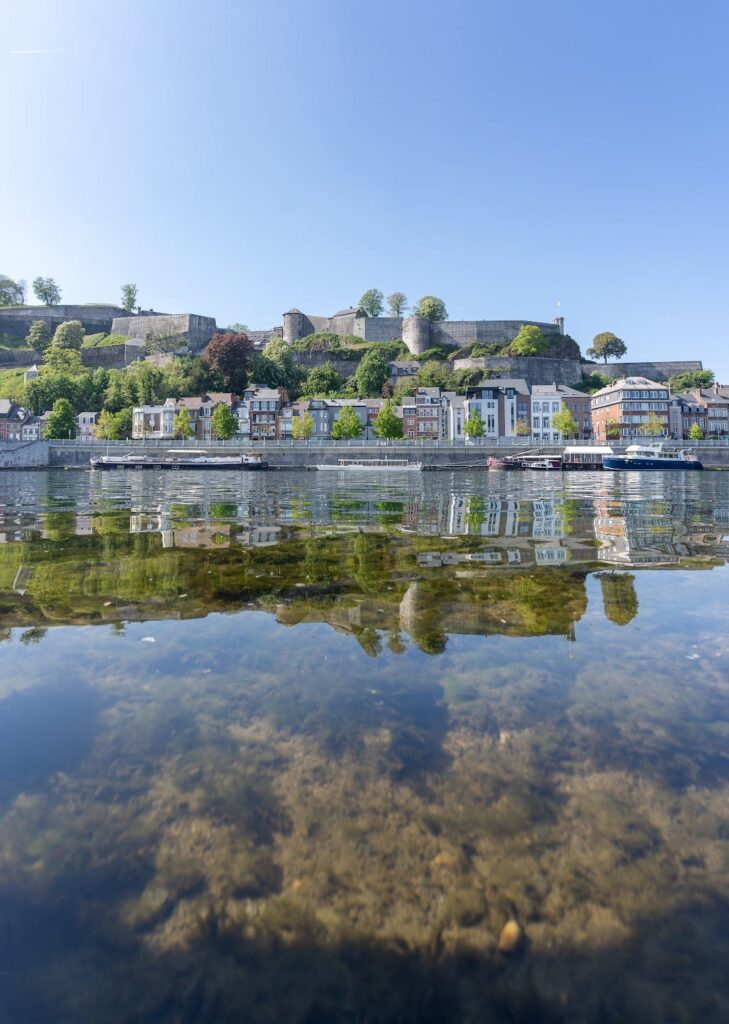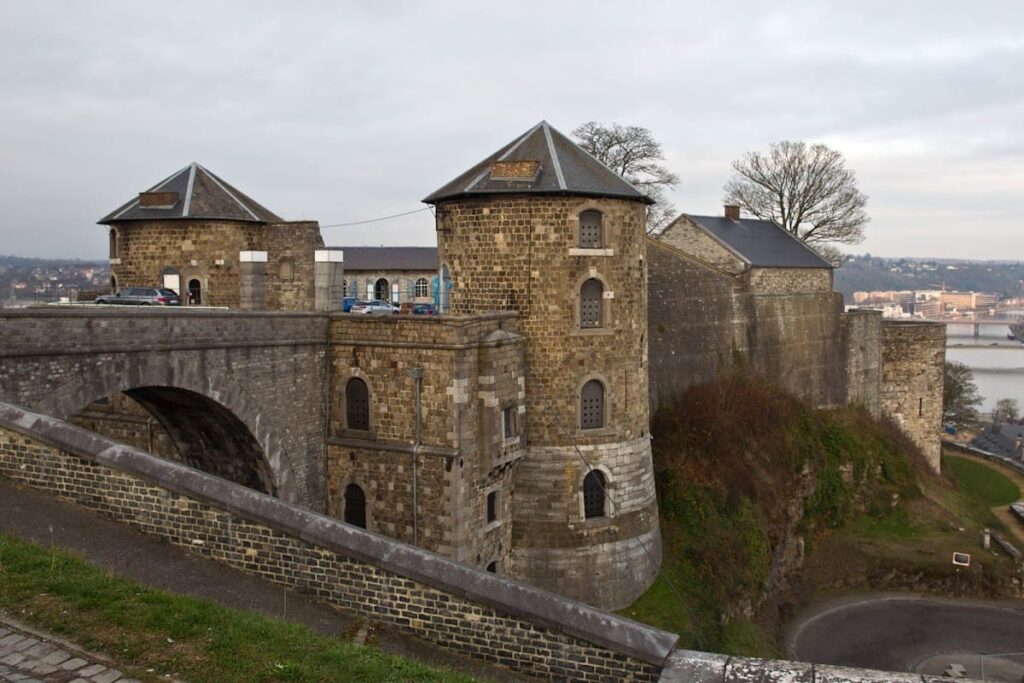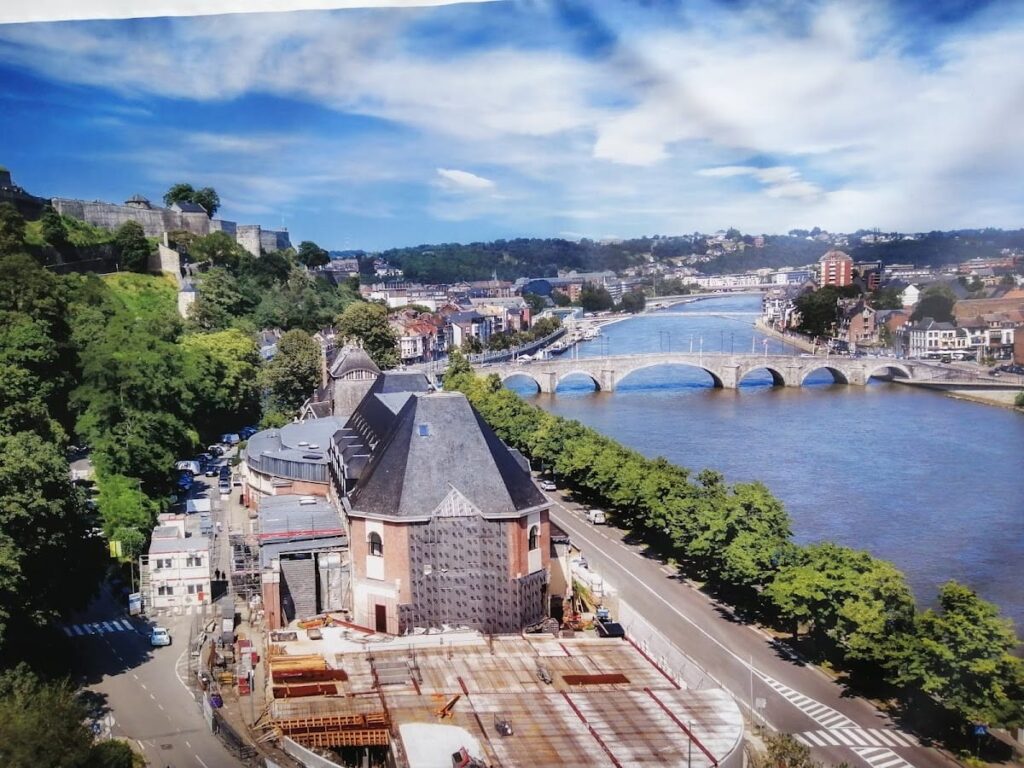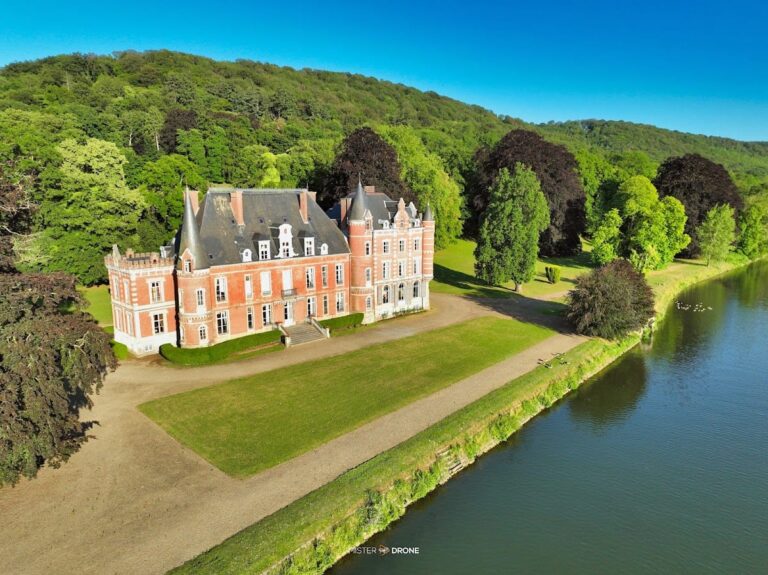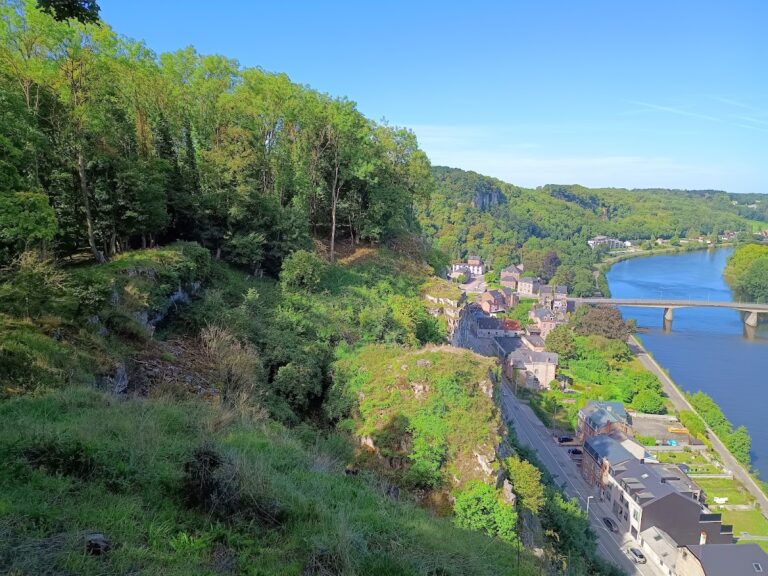Citadel of Namur: A Historic Fortress in Belgium
Visitor Information
Google Rating: 4.5
Popularity: High
Google Maps: View on Google Maps
Official Website: citadelle.namur.be
Country: Belgium
Civilization: Medieval European
Remains: Military
History
The Citadel of Namur is located on a rocky spur overlooking the meeting point of the Meuse and Sambre rivers in present-day Belgium. Human activity on this site dates back to around 6000 BCE, with a settled community and port established by the 1st century CE. Early fortifications appeared by the 9th century, initially as wooden palisades that were replaced by stone walls in the 10th century.
From the 10th century until the 15th century, the citadel served as the residence and capital for 23 counts of Namur. These rulers held significant influence, with family ties extending into European royalty, including emperors and queens. In 1429, the last count sold the county to Philip the Good, Duke of Burgundy, bringing the citadel under Burgundian control.
Between the 15th and 19th centuries, the citadel’s strategic position led to frequent changes in ownership. It was controlled by the Holy Roman Empire, Spanish and Austrian Habsburgs, the French Republic and Empire, and the United Kingdom of the Netherlands. During this time, the fortifications were extensively upgraded, including the addition of bastioned walls designed by engineers such as Donato de Boni, Salomon Van Es, Jean Boulengier, and Menno van Coehoorn.
The citadel faced several sieges, notably in 1692 and 1695 during the War of the League of Augsburg, and again in 1746 during the War of Austrian Succession. In 1782, Emperor Joseph II ordered partial dismantling of the fortifications. Later, Napoleon commanded the demolition of fortresses in annexed lands in 1804, leading to further neglect.
Following the Congress of Vienna in 1815, Dutch engineers restored and modernized the citadel as part of a defensive line against France. During the Belgian Revolution of 1830, the citadel was the scene of mutinies and battles, eventually falling to Belgian forces. It continued as a military garrison and training center but lost much of its defensive role after the construction of outer forts by Henri Alexis Brialmont between 1887 and 1892.
In the 20th century, the citadel was gradually demilitarized, with the last troops leaving in 1977. It transitioned to cultural uses, including hosting a panoramic battle painting inaugurated in 1937. A cable car connecting the citadel to Namur’s city center was installed in 2021.
Remains
The citadel covers more than 80 hectares on a rocky outcrop 190 meters above sea level. It is arranged in three main vertical sections: the Donjon at the lowest level, the Médiane in the middle, and Terra Nova at the highest point. These parts reflect different phases of construction and fortification.
The Donjon area contains medieval structures dating from the 12th century, including the Tour au Four and Tour aux Chartes. Around the 14th century, a ring-shaped moat was carved into the rock surrounding this section. The Dessus Bordial tower, originally built in 1370, was later adapted to hold artillery in the 15th and 16th centuries.
The Médiane bastioned enceinte replaced earlier medieval walls between 1542 and 1559 under Donato de Boni and his successors. This section was enhanced with artillery positions and includes an underground bakery constructed between 1695 and 1698 by Menno van Coehoorn.
Terra Nova was first built in the 17th century by Dutch engineers and later dismantled under Joseph II. It was rebuilt and expanded by the United Kingdom of the Netherlands from 1820 to 1830. This upper fortification includes barracks for 1,200 soldiers, an arsenal, and a staff building. Heating was installed in the barracks by 1837.
The citadel’s fortifications feature bastions, curtain walls, and an extensive network of underground galleries. Napoleon I nicknamed it “The Termite Mound of Europe” because of these vast subterranean passages.
Many original 17th-century residential and officer buildings were demolished by 1913. The Grand Hôtel de la Citadelle, constructed between 1893 and 1899, was destroyed by fire in 1914 and restored in 1930. It now functions as a hospitality training center.
The grounds include a large forested area, residential quarters behind the castle, and a park named after Queen Fabiola, established in 1959 with recreational facilities. Modern adaptations include a visitor center at Terra Nova, a tourist train crossing the Médiane via a footbridge, and a cable car installed in 2021 linking the citadel to the city.
The former guardhouse of Terra Nova was renovated between 2013 and 2014 and now houses exhibition spaces, administrative offices, and a restaurant. The 19th-century staff building is currently used by the Walloon Archaeological Service.
